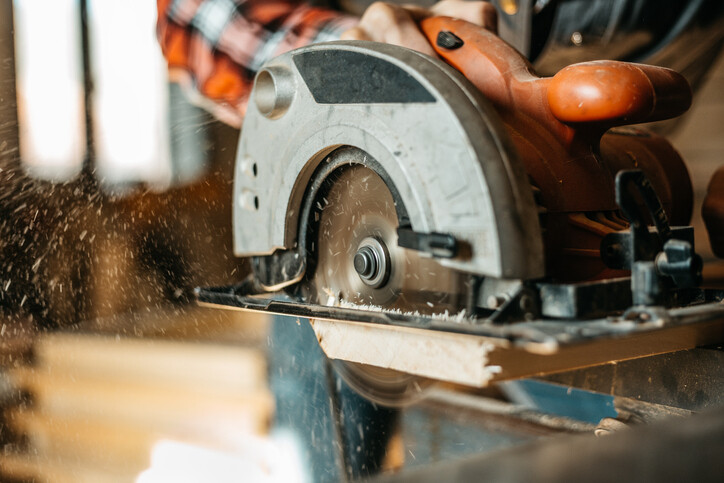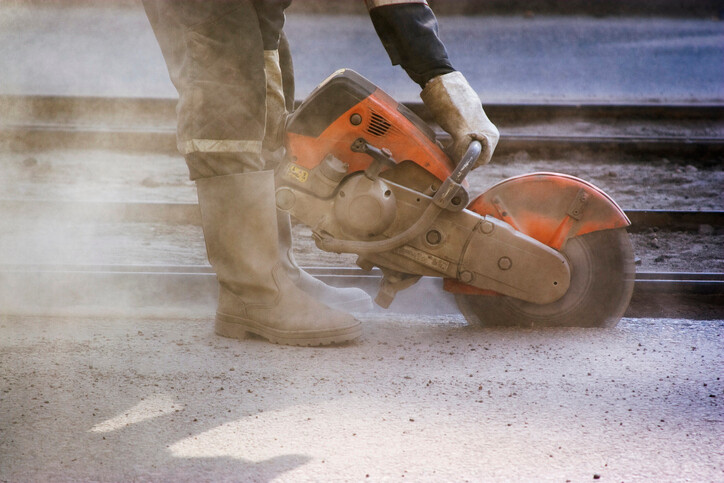 From building garden furniture to plumbing a sink, there are a variety of tasks that require the use of a saw. This versatile tool is capable of cutting a range of materials, including wood and steel, and can achieve precise cuts for any project, whether it’s intricate curves or clean slices through thick materials. With numerous options to choose from, determining the right one for your project can be challenging.
From building garden furniture to plumbing a sink, there are a variety of tasks that require the use of a saw. This versatile tool is capable of cutting a range of materials, including wood and steel, and can achieve precise cuts for any project, whether it’s intricate curves or clean slices through thick materials. With numerous options to choose from, determining the right one for your project can be challenging.
In this article, we’ll explore the various types of saws available, from circular saws and angle grinders. We’ll also provide essential safety advice to ensure your project runs as smoothly and safely as possible. At Drogheda Hire and Sales, we stock a comprehensive range of sawing and cutting equipment, all available to hire across Ireland. To find out more, please get in touch with our team.
The types of saws and their uses
The type of saw you choose will depend on your project requirements. Below, we’ve compiled a useful guide to saws, detailing their uses and the tasks they are best suited for.
Circular Saws: Ideal for heavy-duty sawing, a circular saw is a versatile power tool, designed to make precise cuts through various materials. These include wood, framing materials and flooring. The Hilti circular saw is favoured for its speed, efficiency and portability, making it an essential tool for both professionals and DIY projects.
Consaws (or cut off saws): A powerful tool designed for cutting hard materials such as concrete, asphalt and metal, the consaw is typically used in construction and demolition work. Its robust design and powerful engines makes it the ideal choice for cutting expansion joints in concrete slabs, creating openings in walls and slicing through pipes. The Hilti electric cut-off saw can also be fitted with abrasive or diamond cutting discs, making it simple to make precise cuts through even the toughest materials.
Jigsaws: Designed to make intricate cuts, curved shapes and detailed designs, Jigsaws are commonly used in woodworking for tasks such as cutting out stencils and fitting pieces together. These machines are valued for their manoeuvrability, allowing users to achieve detailed and precise cuts in numerous materials.
Mitre Saws: Best suited to cutting long boards, mitre saws are used to make precise cuts at multiple angles. Unlike the circular saw where the blade feeds through the material, in a mitre saw, the blade is pulled downwards onto the material. Its versatility makes it an excellent choice for fine woodworking.
Reciprocating Saws: Commonly used in construction, plumbing and remodelling, reciprocating saws can cut through metal, plaster, drywall and even masonry. They’re particularly useful for demolition taks, such as cutting through nails, pipes and framing. Their compact design makes cutting in tight spaces and at awkward angles simple, making them an essential tool for renovation work.
Angle Grinders: A versatile tool used to cut, grind and polish a range of materials, angle grinders excel in tasks such as cutting metal pipes and grinding down welds. The BOSCH 4.5" electric angle grinder can be used with metal or stone cutting or grinding discs, which are available to purchase as a consumable item. With the right attachment and proper technique, angle grinders deliver both precision and efficiency across various tasks.
Road Saws: Also known as concrete saws, road saws are a powerful tool for cutting through hard materials such as concrete and asphalt. They are commonly used in construction and road maintenance to create precise, clean cuts for road repairs, trenching and the creation of joints. The Lissmac floor saw is favoured for its compact size. The FS 20 B VE version is equipped with an electric feed instead of a hand crank feed, making it suited for heavy cutting work.
 General saw safety
General saw safety
Saw safety is critical to prevent accidents and injuries. When using a saw of any kind, it’s important to always wear appropriate personal protective equipment (PPE). This includes safety goggles, hearing protection and gloves to safeguard against noise damage and flying debris. Additional safety considerations include:
- Read the manual: Use the saw according to the manufacturer’s instructions.
- Check the material: Remove any nails or screws from the material you’re cutting.
- Be aware: Always keep your hands and body parts away from the cutting path.
- Maintain your footing: Keep your balance and footing and avoid applying excess force.
- Check your surroundings: Maintain a safe environment and make sure other workers who are close to you are wearing proper PPE.
Speak to Drogheda Hire and Sales for saw hire in Drogheda or Dublin
At Drogheda Hire and Sales, we stock a comprehensive range of saws available for hire. If you’re unsure about the type of saw best suited to your project, please get in touch with our knowledgeable team. Call us on 041 9841419 for our Drogheda depot or on 01 9108757 for our Dublin depot, use our contact form or try our Enquiry Bot at the bottom left hand corner of our home page.
